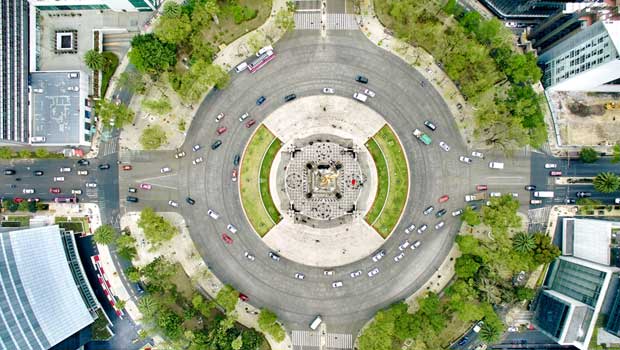Quality of Life in Cities and the Future of Urban Mobility
As you can probably easily testify by looking outside your window (more than 50% of the world’s population lives in cities) the quality of life in our cities is tightly linked to the state of its traffic congestion. Besides a few notable exception (which don’t happen by magic by the way) all major cities worldwide are heavily affected by traffic jams and high level of pollutions, not to mention the 14% contribution of the transport sector to climate change. Actually simple and fast solutions do exist and are easy to implement from the legislator’s side, while we as citizens can certainly do our share. Let’s see how.

Let’s begin with simple circulation taxes. Say a city wants less – or cleaner – vehicles in a certain area, it just applies an entry tax (technically called pollution-charge or congestion charge). Theoretically the amount of this charge should be calculated on the basis of the number of vehicles (or pollution) you want to be on the road. So, if Milan and London for instance have had sensible declines (around 15%) in their circulating vehicles and air pollution since they introduce an entry tax of few Euro to access their city centers… on the other side of the world, one of the most crowded places on earth, Singapore, managed to cut by three its number of cars, but regulators had to raise taxes to dozens of thousand of dollars per year to achieve this. In fact, today only 15% of the population in Singapore owns a private car while the huge revenues of the tax allow to finance one of the best public transport systems in the world.

The rise of electric vehicles had been impressive in the last years (+26% in the US in 2016), mainly thanks to fast developing technologies which allow to store more electric power at lesser costs. With the entry price vehicle at more than 20.000 Euro, electric vehicles however still remain a high segment market as of today, but we can certainly expect further drop in prices in the mid term leading to a partial replacement of our fossil fueled transportation system. For the longer term, also self driving cars will surely redefine the mobility in our cities.
If the first solution is solely in the hand of our legislators, we also have to admit the latter two options still sound a little bit sci-fi today. Thankfully, tech change is happening rapidly in front of our eyes, and we are actually part of it!

The sharing economy is already here and is revolutionising the urban mobility in the major city centers and beyond, also thanks to a wider environmental consciousness. Blablacar, Car2go, Uber and Lyft are now well known services which allow in different ways persons to not own a personal car, but just easily rent one on the go when they need it, with a driver or not. Progress are fast in this area and nowadays new emerging services even allow persons wishing to drive but who don’t own a vehicle to rent a car for Uber and Lyft.
The impact of the so-called shared mobility should not be underestimated, because it concretely means less car owned and less cars on the street, with direct and measurable impacts on congestion and air quality. For instance, a recent study of the University of California, Berkeley estimates that each car2go vehicle removes between 7 to 11 vehicles from city roads, reduces by roughly 10% the vehicle miles traveled and the greenhouse gas emissions per person.

Solutions to improve dramatically our quality of life in the cities, the air we breath and the landscape we put our eyes on already depends on our daily choices, and urban mobility is a sector where each and everyone of us can make responsible ones. Today this is easier than ever and no excuse shall stand as solutions are already at our fingertips, embedded in our smartphone.











